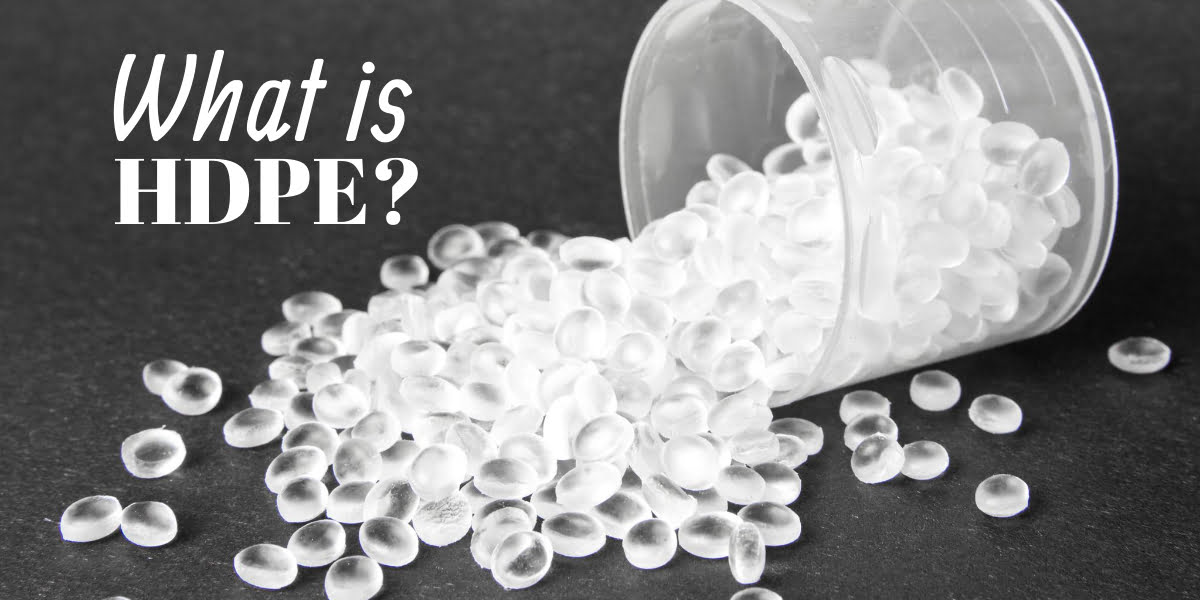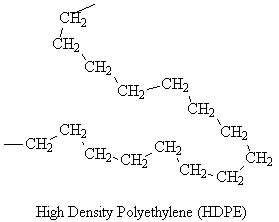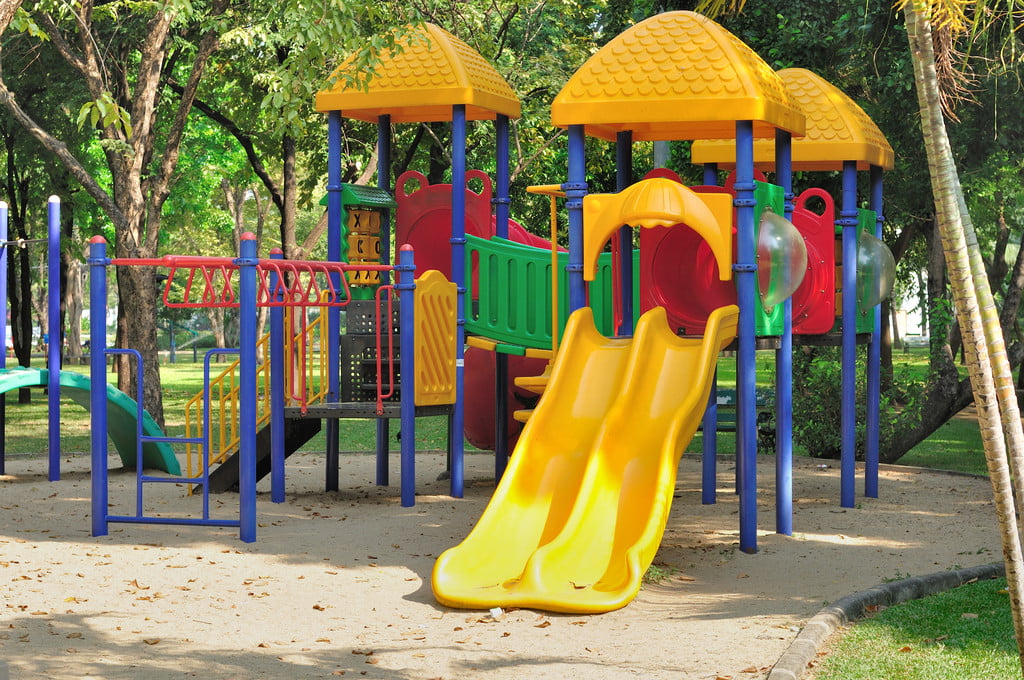What is HDPE?

What is HDPE? High density polyethylene (HDPE) plastic comes from crude oil. It is one of the most versatile materials around. It is an engineering grade material that is widely used in manufacturing products like plastic chemical bottles, milk jugs and shampoo containers. Due to its durability and low cost, HDPE is often used in consumer goods as well. Its properties allow it to withstand extreme temperatures and pressures. High density polyethylene is also resistant to chemicals and UV.
HDPE is commonly used in the food industry. They are also used in medical devices, construction materials, and other industries. In fact, HDPE is so versatile that it is used in automotive parts, toys, and even clothing.
How are High Density Plastics made?
The process begins by mixing together two chemicals: 1) a long chain polymer called polyethylene (PE), which comes from crude oil; 2) a short chain polymer called ethylene glycol (EG). These two molecules then bond together to form a new molecule called high density polyethylene (HDPE). This new molecule has properties similar to PE but is stronger than PE. This is why it’s used to make things like plastic bags, bottles, and pipes that will be responsible for holding heavier items.

What are the benefits of HDPE?
Heat Resistant
One thing that makes HDPE special is its ability to withstand extreme temperatures. For example, if you were to put hot food inside a container made of HDPE, the container would remain safe from damage. In addition, HDPE is non-toxic, meaning that it doesn’t contain harmful substances. This makes it a great choice for food containers, medical devices, and other products where safety is key.
High Strength
HDPE has a tensile strength of 23.0 – 29.5 MPa (1.5-2.0 times higher than that of polyethylene terephthalate). This means that it can withstand greater loads without breaking or cracking.
HDPE’s unique properties come from its molecular structure. Its low degree of branching means it can withstand heavier loads. It is also harder than other plastics and can resist higher pressures. Because of this, it’s often used for piping and other outdoor applications.
Recycling HDPE
When HDPE reaches the end of its first life, it’s melted down and reused. The process involves heating up the material until it becomes liquid again. Once this happens, resin is produced that can be molded into new products.
Recycling HDPE reduces the amount of virgin resin needed to produce new HDPE products. This produces less energy and fewer greenhouse gases are required. In addition, recycling HDPE creates value from waste, helping to improve our environment.
Excellent Chemical Resistance
HDPE has excellent chemical resistance and is suitable for most applications where high chemical resistance is required. It is highly resistant to chemicals including acids, alkalis, oil, grease, solvents, and detergents. Hence, it is widely used in food packaging, pharmaceuticals, cosmetics, paints, adhesives, etc.
Good Impact Resistance
HDPE can withstand impacts with a force of up to 50 kN (10 tons), whereas PET can withstand impacts with forces of up to 20 kN (4 tons).
The difference in impact resistance between HDPE and PET is mainly due to the difference in thickness. HDPE has an higher average thickness because of the higher density, while PET and other plastics have a lower average thickness.
Common Items Made From HDPE

Milk jugs & shampoo bottles
Milk jugs are often made of HDPE materials. The strength of HDPE make it a great candidate for this because milk and thicker liquids such as shampoo and conditioner are heavy and need support. Another great reason HDPE is used, is because it’s a lightweight and does not add much in terms of total weight to the product. Finally HDPE as we know, is easily recycled and renewed into other products. This severely cuts back on single use bottles and plastic containers.
Food storage containers
When choosing a container for storing your food, you need to choose wisely because not all plastic containers are safe for food storage. There are two main categories of plastics that are considered safe for food storage: BPA-free and phthalate-free.
The FDA has approved HDPE as food grade packaging because it is BPA free and will not leech into it’s contents. It is also resistant to mold. You can always check if your plastic food container is made from HDPE by looking for a RIC, or Resin Identification Code on the container. It will look like a triangle of arrows with a number in the center that is the code for the type of plastic the container or product is made of. HDPE is code 2. Don’t worry though if you see a different number, HDPE is not the only approved food grade plastic. The FDA has actually approved resin codes 1-7 for food grade materials.
Underground pipes
HDPE pipe systems can be used for many applications, including standard trenching of water main, fire ring main, sewer main, and gas main pipelines, as well as for horizontal drilling for electrical and telecommunication conduits. According to a company that manufactures HDPE systems, HDPE systems are cost effective to implement and have long-term maintenance cost savings.
Playground equipment

Playground equipment can be made out of HDPE plastic. HDPE playground equipment is light weight and durable so they won’t break down over time. They also don’t require too much maintenance and are easy to clean. As we mentioned before it is free of BPA and does not leech chemicals making it safe for kids.
Kid and pet toys made from HDPE
Because of it’s durability and toxin free benefits HDPE is a type of plastic that is safe for children and pets. Many of today’s children’s toys and pet toys are made from HDPE and is able to withstand most of the punishment pets and small children can deliver.
Recycled HDPE
HDPE recycled material is widely used to make outdoor products and furniture, such as garbage bins, decking, bike racks, benches, fences, chairs, and picnic tables.
Actually, HDPE is one of the most environmentally friendly building materials because it’s low-maintenance, long-lasting, nontoxic, and can be recycled over and over again.
Wrapping Up
High Density Polyethylene is a highly versatile material that is used for a wide range of purposes. It is strong, lightweight, flexible, and durable. It has a high tensile strength, which means it can be easily stretched, bent, and twisted. It is also very resistant to heat and chemicals. It can be easily cut and shaped, which makes it ideal for use in many different applications. HPDE is also highly recyclable providing a lesser impact to the environment.
